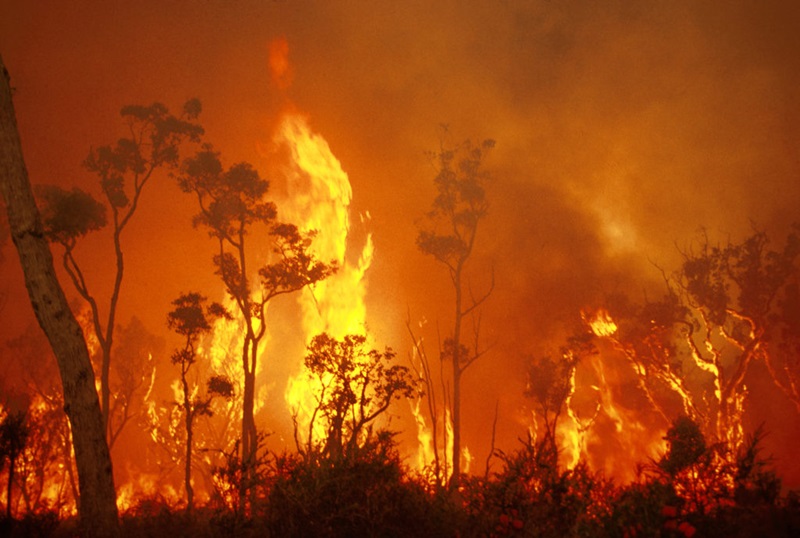Exactly How BAL Record Impacts Bush Fire Protection Steps
In the world of bush fire protection, the Building Attack Degree (BAL) record stands as a critical device that significantly influences the safety and security and resilience of residential properties in fire-prone locations - BAL Report. The effect of a BAL evaluation prolongs much beyond mere documentation; it acts as the cornerstone for identifying the suitable building and construction criteria and fire defense steps essential to alleviate the threats postured by bushfires. As areas face progressively severe fire periods, comprehending exactly how the BAL report shapes these protective steps comes to be vital for home builders, policymakers, and homeowners alike
Understanding the Bushfire Strike Degree

Importance of BAL Report Assessment

Additionally, the BAL report assessment works as a foundational action in adhering to lawful commitments and demands associated with bushfire protection. Neighborhood councils and authorities frequently mandate the entry of a BAL report as component of the preparation and building authorization process to make certain that buildings are effectively secured versus bushfire threats. Falling short to carry out a detailed BAL record assessment can lead to inadequate protection procedures, leaving homes vulnerable to devastating bushfire cases.
Building And Construction Standards Based Upon BAL
An extensive understanding of the Bushfire Assault Level (BAL) allows residential or commercial property proprietors to execute building standards tailored to their details threat account. Building and construction standards based on BAL are critical in reducing the effect of bushfires on look at this now homes. The BAL ranking categorizes the possible threat a property deals with during a bushfire on a scale from BAL-Low to BAL-FZ (Flame Area) Each BAL degree corresponds to specific building and construction needs outlined in the Australian Basic AS3959-2018 Construction of Buildings in Bushfire-Prone Locations. Buildings identified as BAL-Low may just call for fundamental measures such as removing debris and maintaining gardens, while those in greater BAL classifications require even more durable steps like coal displays, fireproof products, and sealed home windows. Sticking to these building and construction requirements not only boosts the architectural strength of the home yet additionally improves the general safety and security of citizens throughout a bushfire event. Residential or commercial property proprietors need to meticulously consider their BAL rating and abide with the equivalent construction standards to adequately secure their homes and owners.
Executing Fire Security Steps
With the foundation of building standards based on Bushfire Assault Degree (BAL) in location, the focus currently shifts in the direction of the functional implementation of fire security steps to strengthen properties against bushfire dangers. Passive steps consist of using fireproof structure materials, installing cinder guards on vents, sealing voids in walls and roof coverings, and maintaining a clear room around the residential property cost-free from flammable vegetation. By integrating both passive and energetic strategies, buildings can dramatically decrease their susceptability to bushfire events and increase the safety of residents.
Safeguarding Residences Against Bushfires
Properly safeguarding homes versus the damaging impacts of bushfires calls for a aggressive and detailed method to fire security measures. In addition, securing voids and vents to protect against ember invasion, as well as integrating fire-resistant doors and windows, can aid strengthen the home's protection versus bushfires. By welcoming an aggressive position and check over here integrating these protective procedures, property owners can significantly raise their possibilities of guarding their homes versus bushfires.
Final Thought
Finally, the Bushfire Attack Level (BAL) next page record plays a crucial role in identifying the required protection measures versus bushfires. By examining the BAL, construction standards can be customized to mitigate the risks and ensure the safety of homes in fire-prone areas. Carrying out fire defense procedures based upon the BAL record is important in safeguarding properties from potential bushfire dangers. It is important for house owners to focus on BAL assessments and stick to recommended building requirements to enhance bushfire resilience.
In assessing bushfire threat to buildings, comprehending the Bushfire Attack Degree (BAL) is a vital component for executing efficient security measures. Generally, a clear understanding of the Bushfire Strike Degree is crucial for carrying out ample security procedures and reducing the impact of bushfires on residential or commercial properties.
